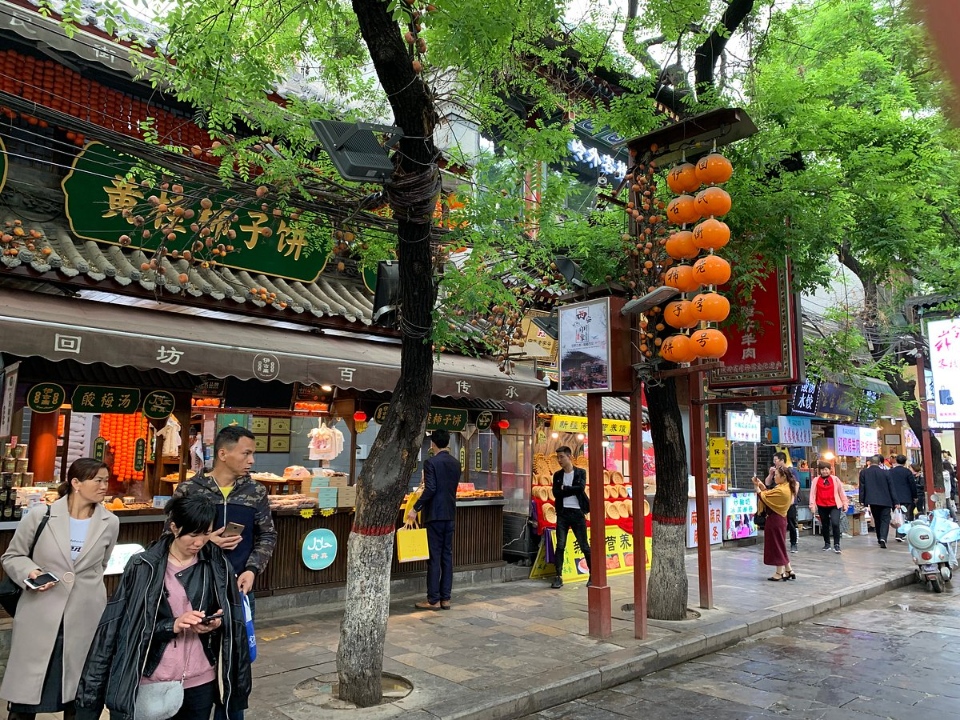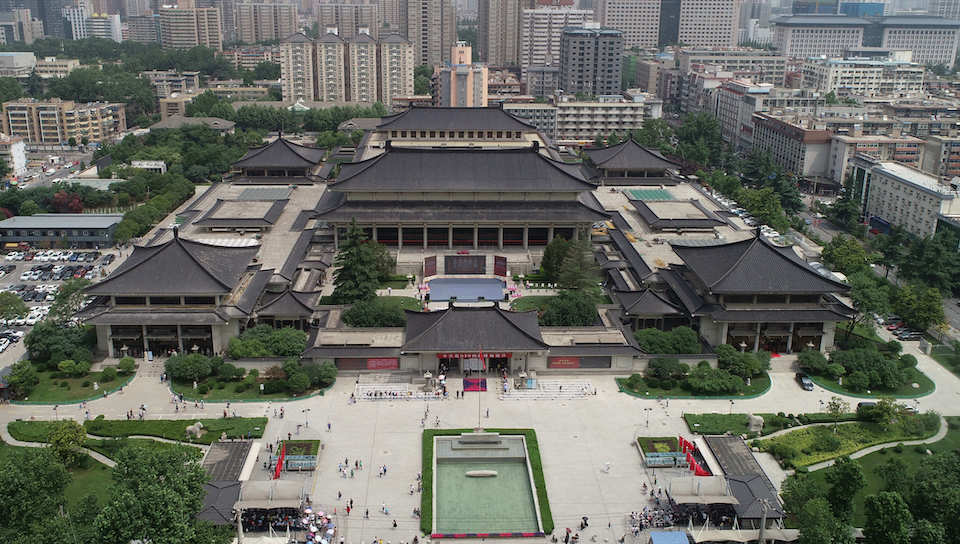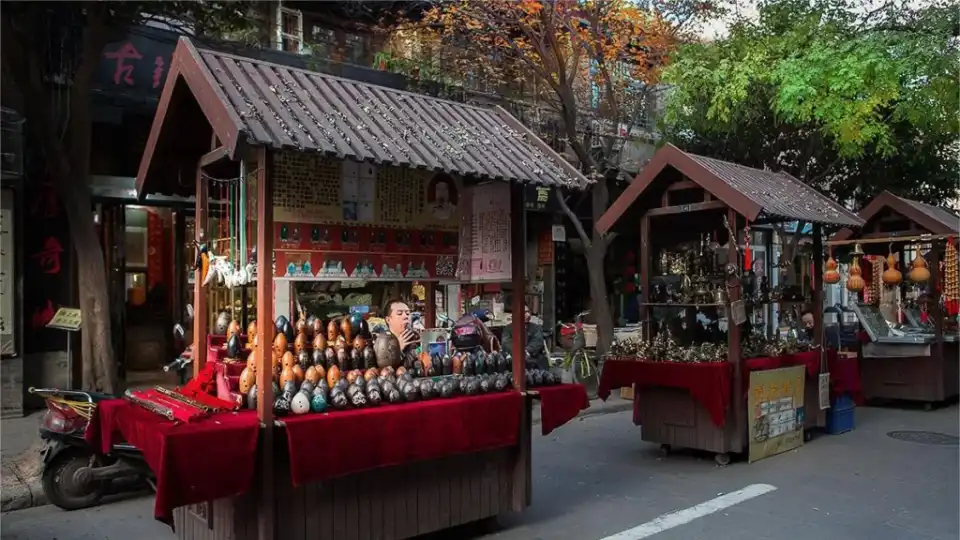Xi’an, formerly known as Chang’an, boasts a rich history as one of China’s oldest capitals. For over 3,000 years, and as a capital city for over 1,100, it stands as a testament to ancient Chinese civilization, rich with cultural heritage and historical artifacts. This guide highlights key attractions for independent travelers.

Xi’an Cityscape


Musical Fountain Show
Located in Northwest China, Xi’an’s significance extends to its position as the eastern terminus of the Silk Road. Its modern development, driven by the Western China Development Program, complements its historical importance, making it a vibrant hub of economic, cultural, and educational activities.


Muslim Quarter

Qin Shi Huang Mausoleum: A Monumental Legacy
-
Address: Lintong County, Xi’an

Qin Shi Huang Mausoleum
The Mausoleum of the First Qin Emperor, located 35km east of Xi’an, is a colossal structure exceeding even the Great Pyramid of Giza in scale. Originally 100 meters high, its present height is approximately 47 meters, encompassing a vast area of 2,180,000 square meters.


Beyond the renowned Terracotta Army, the site houses the Bronze Chariot Museum, showcasing remarkable bronze artifacts that illuminate Qin Dynasty metallurgy. Other notable features include Tomb No. 9901—with its terracotta figures depicting artistic performances—and the K0006 tunnel, preserving its original wooden framework.


Transportation options include trams, horse-drawn carriages, and free shuttle buses between the mausoleum and the Terracotta Army Museum. International visitors should remember to bring their passports.
Xi’an City Wall: A Fortified Symbol of History
-
Address: 2 South Street, Beilin District, Xi’an City

Xi’an City Wall
Xi’an’s ancient city wall is a monumental structure, the most well-preserved ancient military architecture in China. With a 13.7 km circumference, standing 12 meters high and 12-18 meters wide, it boasts four main gates: East (Changle), West (Anding), South (Yongning), and North (Anyuan), built during the Ming Dynasty.


Explore the wall on foot, by bicycle, or via electric car. Seasonal events, such as the Lantern Festival (January-March), International Marathon (October), and Kite Festival (April), offer engaging cultural experiences.

Xi’an City Wall
Giant Wild Goose Pagoda: A Buddhist Landmark
-
Address: 1 Cien Rd, Yanta District, Xi’an

Xuanzang Statue
Fans of Journey to the West will find the Giant Wild Goose Pagoda captivating. Originally 60 meters tall, this Tang Dynasty structure (built in 652) now stands at 64.5 meters, with seven stories. It houses precious Buddhist artifacts brought back by the monk Xuanzang from his seventeen-year pilgrimage along the Silk Road.



Part of the Da Ci’en Temple complex, the pagoda sits within expansive grounds featuring gardens, a plaza, and Asia’s largest musical fountain. Ascend the pagoda for panoramic city views. The Da Ci’en Temple entrance fee is 40 yuan, and climbing the pagoda costs 25 yuan.
Exploring Xi’an: A Guide to Key Attractions
Xi’an, a city steeped in history and culture, offers a wealth of attractions. This guide highlights several must-see destinations.

Huashan Mountain: A Challenging Climb with Stunning Views
Located approximately 120km from Xi’an, Huashan is one of China’s Five Great Mountains. This iconic peak boasts five distinct summits—East, West, South, North, and Central—each offering breathtaking panoramas and challenging climbs. Ancient Taoist temples dot the landscape, adding to its historical significance. Visitors can choose to hike or take a cable car, but sturdy hiking shoes and ample water are essential for those tackling the trails. The entrance fee varies seasonally (¥100-160), as does the cable car fare. Spring and autumn (April-October) provide the most pleasant climbing conditions.


Xi’an Bell Tower: A Six-Century Landmark
Standing proudly in the heart of Xi’an’s Beilin District, the Bell Tower is a remarkable six-century-old structure. Open from 8:30 AM to 9:30 PM during peak season (April 1st – October 10th) and 8:30 AM to 6:00 PM during the off-season (October 11th – March 31st), it offers a glimpse into the city’s rich past for a ¥30 entrance fee. Easily accessible via Metro Line 2 or numerous bus routes, the tower’s two-story, three-eaves design, with gray bricks, red pillars, and dark green tiles, exudes timeless elegance. Inside, visitors can explore artifacts, traditional artwork, and enjoy cultural performances. The nighttime illumination transforms the tower into a spectacular sight.





Xi’an Drum Tower: A Complement to the Bell Tower
A mere 200 meters from its counterpart, the Drum Tower stands as another architectural marvel. Constructed in 1380 during the Ming Dynasty, this 34-meter-high structure houses a museum showcasing ancient drums and cultural relics, some dating back over a millennium. Highlights include 24 drums representing the solar terms in the Chinese lunar calendar. Cultural performances, especially drum shows, add to the visitor experience. The Drum Tower operates under similar hours and pricing as the Bell Tower, and a combined ticket for both is available for ¥50.


Xi’an Muslim Quarter: A Culinary and Cultural Delight
Near the Drum Tower, the Muslim Quarter offers a vibrant blend of culinary delights and cultural immersion. This historic district, with origins tracing back over 1,000 years, features more than 300 food stalls tempting visitors with an array of specialties like “Chinese hamburgers,” soup dumplings, and lamb soup bread. Beyond the delicious food, explore mosques showcasing intricate Chinese architecture, offering a glimpse into the harmonious blend of cultures.




Shaanxi Provincial History Museum: A Journey Through Time
For history buffs, the Shaanxi Provincial History Museum is an absolute must-visit. As China’s first modern national museum, it houses over 370,000 artifacts spanning prehistory to 1840. The museum’s Tang Dynasty-style architecture houses permanent and temporary exhibitions, as well as a dedicated mural hall. Notable artifacts include gold works, tri-color glazed ceramics, and items related to the Silk Road. While admission is free, advance booking is required via the official website or WeChat.





Xi’an’s Cultural and Historical Gems: A Traveler’s Guide
This guide highlights several must-see destinations showcasing Xi’an’s rich history and culture.
Guanzhong Folk Art Museum
-
Address: No. 1 South Wutaishan Road, Wutai Ancient Town, Chang’an District, Xi’an City

Located 30km from central Xi’an in Wutai Town, the Guanzhong Folk Art Museum offers a captivating journey through time. Over 33,600 artifacts, encompassing stone sculptures, brick carvings, wood carvings, shadow puppets, and antique furniture, provide a comprehensive glimpse into regional history and artistry. The museum’s meticulously restored Ming and Qing Dynasty houses, arranged to recreate an ancient street, enhance the immersive experience. Witness traditional opera and shadow puppet performances for a truly enriching cultural encounter. Allow approximately one hour for exploration.
Huaqing Palace
-
Address: 38 North Huqing Road, Lintong District, Xi’an City

Situated 25km from central Xi’an, Huaqing Palace boasts a captivating blend of scenic beauty and historical significance. Serving as an imperial palace for over 3,000 years, it’s renowned for its association with the romance of Emperor Xuanzong of Tang and Yang Guifei.



Explore the ruins of Tang Dynasty royal hot springs, wander through the expansive lotus garden, and admire the magnificent Longevity Palace. The Nine Dragons Lake, with its elegant bridge, serves as the backdrop for the “Chang Ge Han” play, recounting Yang Guifei’s tragic life.


Access Huaqing Palace via bus routes 914, 915, or 306 from Xi’an Railway Station. Spring (March-May) and autumn (September-November) offer ideal visiting conditions.
Shuyuanmen Ancient Street
-
Address: Shuyuanmen, Beilin District, Xi’an

Named after the historical Guanzhong Shuyuan School, the 570-meter Shuyuanmen Ancient Street exudes a captivating atmosphere. The aroma of calligraphy ink blends with the sight of traditional Ming and Qing Dynasty shops.

Discover a wealth of calligraphy items, antiques, jade, paintings, and handicrafts alongside local art, including shadow puppets, paper carvings, and exquisite face paintings. Shops are open daily from 9:00 to 22:00. Reach Shuyuanmen via buses 12, 184, 193, 600, 603, 208, 221 to Nanmen station, or Metro line 2 to Yongningmen station.
Qianling Mausoleum
-
Address: Qian District, Xianyang, Shaanxi

Beyond the mausoleum of Qin Shi Huang, Xi’an is also the final resting place of Wu Zetian, China’s only female emperor. The Qianling Mausoleum’s magnificent architecture, mirroring the Chang’an citadel, features a north-south axis protected by 124 stone statues reflecting the cultural exchange between Asia and Europe. These statues, depicting animals, people, and even ostriches, illustrate the flourishing trade of the Tang Dynasty.

Its robust construction ensured its survival, unlike many other mausoleums. Admire the impressive stone statues and the “Qijie Bei” inscription by Wu Zetian. Entrance fees range from 80-100 CNY, varying by season. Access the mausoleum via high-speed train from Xi’an Bei Station to Qian County, followed by taxi or bus.
Tang Dynasty Furong Garden
-
Address: No. 99 Furongxi Road, Qujiang New District, Xi’an City

Furong Garden vividly portrays the magnificence of the Tang Dynasty (618-907). This 165-acre garden, encompassing 300 acres of water, is divided into 14 cultural zones, each showcasing Tang architecture and art, from grand palaces to serene gardens.


The central Ziyun Tower is a highlight. Immerse yourself in traditional art performances at the Phoenix Theater, partake in a Tang tea ceremony at the Luwu Tea House, and indulge in a royal banquet at the Imperial Banquet Palace. The “Dream of the Great Tang” light and water show further enhances the magical ambiance.
Hukou Waterfall
-
Address: Yichuan County, Yanan City, Shaanxi Province

The breathtaking Hukou Waterfall on the Yellow River is a sight to behold. This world’s largest alluvial waterfall showcases rugged scenery, majestic gorges, and the vast Loess Plateau. April-May and September-November offer ideal visiting conditions with pleasant weather and stunning views.
Beyond the main waterfall, explore the intriguing Dragon Cave and witness the captivating rainbow effect. A traditional Shaanxi drum dance performance adds a unique cultural dimension to the experience.
Famen Temple: A Sacred Buddhist Site Near Xi’an
Famen Temple, situated in Fufeng County, Baoji City, Shaanxi Province (approximately 120km from Xi’an), is a significant Buddhist site and a treasure trove of Chinese history. Its primary claim to fame is housing a finger bone relic of the Buddha Sakyamuni, attracting countless pilgrims and tourists annually.

The temple complex encompasses several key areas: the Temple Gate Square, the impressive 1230-meter-long Foguang Avenue, the grand main hall, and the prominent Namaste Tower. The discovery of an underground palace beneath the tower in 1987 yielded a remarkable collection of Tang Dynasty artifacts, further enhancing the temple’s historical significance. Visitors can reach the temple from Xi’an via bus or taxi. Allow at least three hours to fully appreciate the temple’s architectural grandeur and rich history.

Xi’an’s enduring appeal stems from its blend of historical sites—from the Terracotta Army and ancient city walls to serene pagodas—and its stunning natural landscape, including the majestic Mount Huashan. The city offers a compelling fusion of impressive architecture, unique cultural experiences, and a vibrant culinary scene.
Xi’an’s enduring appeal stems from its blend of historical sites—from the Terracotta Army and ancient city walls to serene pagodas—and its stunning natural landscape, including the majestic Mount Huashan. The city offers a compelling fusion of impressive architecture, unique cultural experiences, and a vibrant culinary scene.



















